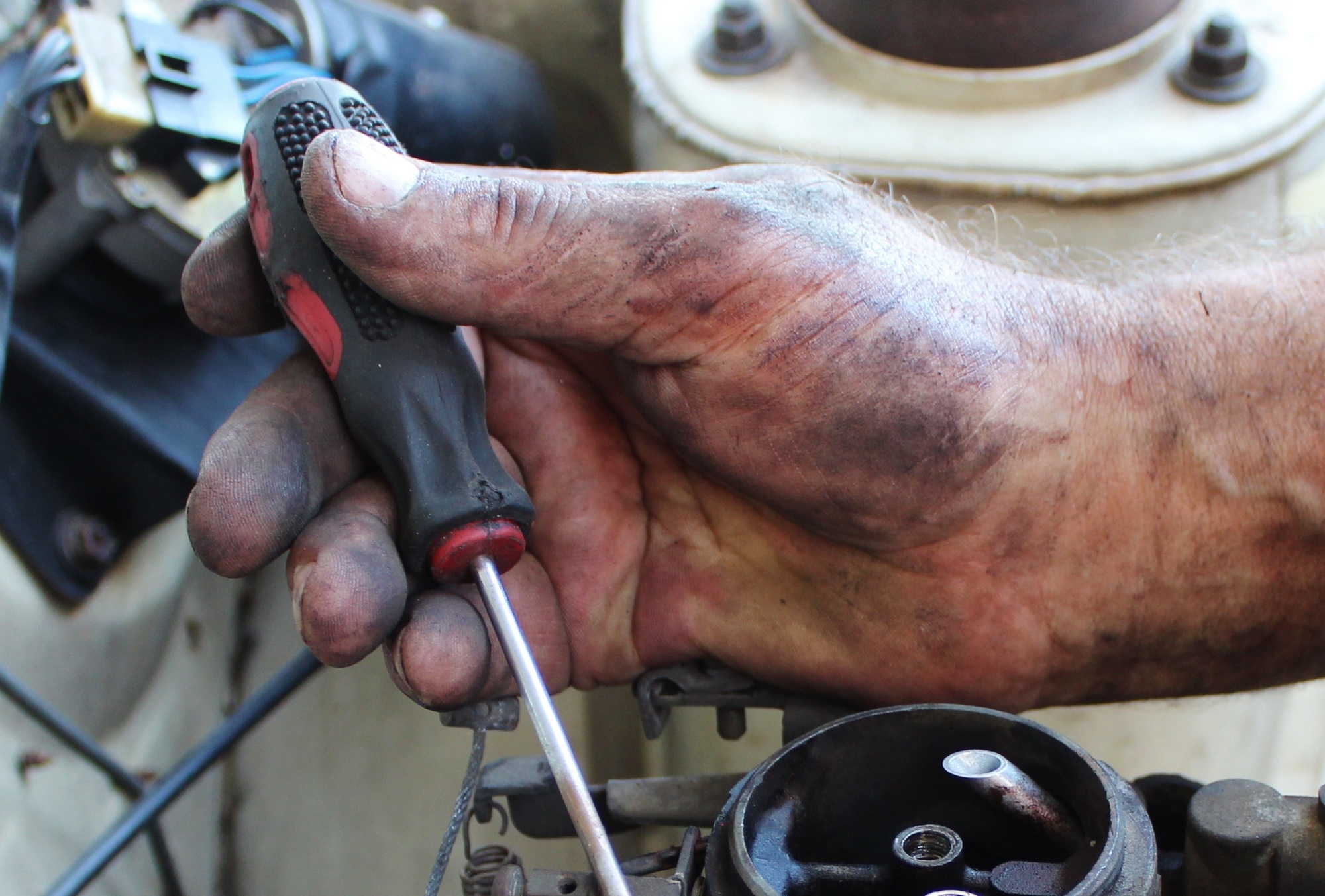What is the lifeblood of an engine that is constantly consumed but comes absolutely free?
Maybe your first thought is that fuel has to be the lifeblood of an engine. That is true to some degree.
No fuel no go.
Yet, just as important, if not more important is oxygen! Did you know for every 1 gram of fuel your engine needs 14 grams of oxygen?
Find Your Online Car Repair Manual Today! ->>
There is plenty of oxygen around us but remember that the air we breathe is only 21% oxygen. That air is the same air your car engine breathes. Almost all the rest of the air we breathe is nitrogen.
That means air has to be ‘breathed’ in by your engine and fuel needs to be transported from your fuel tank, and both conveyed to the engine’s combustion chamber. Oxygen is essential for combustion.
How your fuel and oxygen conveyed to the engine is the job of the carburetor intake. Read on to learn the basic science of how to choose the best intake manifold for your engine and vehicle.
RPM – Back to Basics
It is an acronym that means ‘revolutions per minute.’ In a standard 4 cylinder 4 stroke engine, the engine will turn over one revolution with every cylinder firing. That usually means a smooth delivery of power.
When the engine is ‘at rest’ or idling, that is to say, it is not engaged into gear the number of revolutions per minute will be quite low. It could be between 600 and 1000 rpm.
However, when the engine is engaged into gear, and it needs to work, then the rpm steadily increases as greater demands are put on it. All engines will have a cruising rpm that is optimal for the engine and cause the least vibration in the engine.
During the various phases of each cylinder firing, the available fuel and oxygen for the combustion process is a major factor in how powerful the engine is at any moment in time.
The intake manifold is a major factor that influences the engine’s power.
Choose the wrong intake manifold and your engine will be sluggish and underpowered.
Choose the best intake manifold and you will fully harness the power the engine is capable of.
Carburater Intake – Good Old Science
There are some basic variables that must be understood first before getting the principle of how to choose the best manifold intake for your engine. Those variables are as follows:
Single or Dual Plane
This refers to the channels in the carburetor intake manifold. These channels use the technical or physics term ‘plenum’ because they will contain air at a pressure that is greater than atmospheric pressure.
It is possible to have a single plenum which will deliver the fuel and oxygen to all the cylinders. Because there is only one channel, the distribution of fuel and air is equalized among the cylinders.
This means the power is more uniform across the cylinders. This is useful when combined with a high rpm as it means the power is consistently on.
Dual plane means the air and fuel are delivered via two plenums. In a V8 engine, each plenum will feed 4 cylinders.
This means each group of 4 cylinders does not need to fire with every rotation of the engine but they fire every other rotation. That means their firing is 180 degrees out of phase.
This means the induction pulse from each cylinder overlaps less than the single plenum configuration. This is very useful at a low rpm.
It means the cycle of the pulses are smoother and give a smoother delivery of power in the low to mid-rpm range. This is the most common configuration in a standard engine.
Length of the Intake Runner
The runner is the metal tube that carries the fuel and air from the carburetor intake manifold to the inlet port on the engine head.
The length of the runner is effected by some very important laws of physics that dictate how air flows and changes pressure.
The key is that every engine has a point in which it produces its maximum force or power. The rpm a which that point occurs is dependent on the length of the intake runner.
Longer intake runners lead to high torque lower down in the rpm scale. This configuration works well with dual plenums.
Shorter intake runners push the torque delivery curve up the rpm scale to higher rpm levels. This configuration works well with a single plenum.
Match the Science with the Purpose
If you understand the basic science, you can then begin to match the right configuration of the carburetor intake manifold with the purpose you wish to use it for.
For example, another variation on the dual plenum is the air-gap intake manifold.
This adds a layer of air between the intake and the engine. This helps keep the intake cooler. A cooler intake means more densely packed air molecules delivering improved power in the mid-rpm range.
High-performance engines are often served by the single plenum manifolds as this configuration delivers high torque or pull at a high rpm.
It is true at a lower rpm the power delivery is less smooth but that is not important when your main concern is using an engine to race at high speeds and deliver high performance.
Of course, the actual vehicle you intend to match with the engine is also a major consideration in your power needs. Large trucks will have a different need to a low profile racing vehicle.
Here is more about performance parts for trucks.
Get in Gear
Yes, there are many different types of carburetor intake manifolds on the market.
Do not be overwhelmed by this. Get to grips with the basic science and everything else will begin to fall into place.
If you are not sure always seek advice first. You can get in touch with us here.







